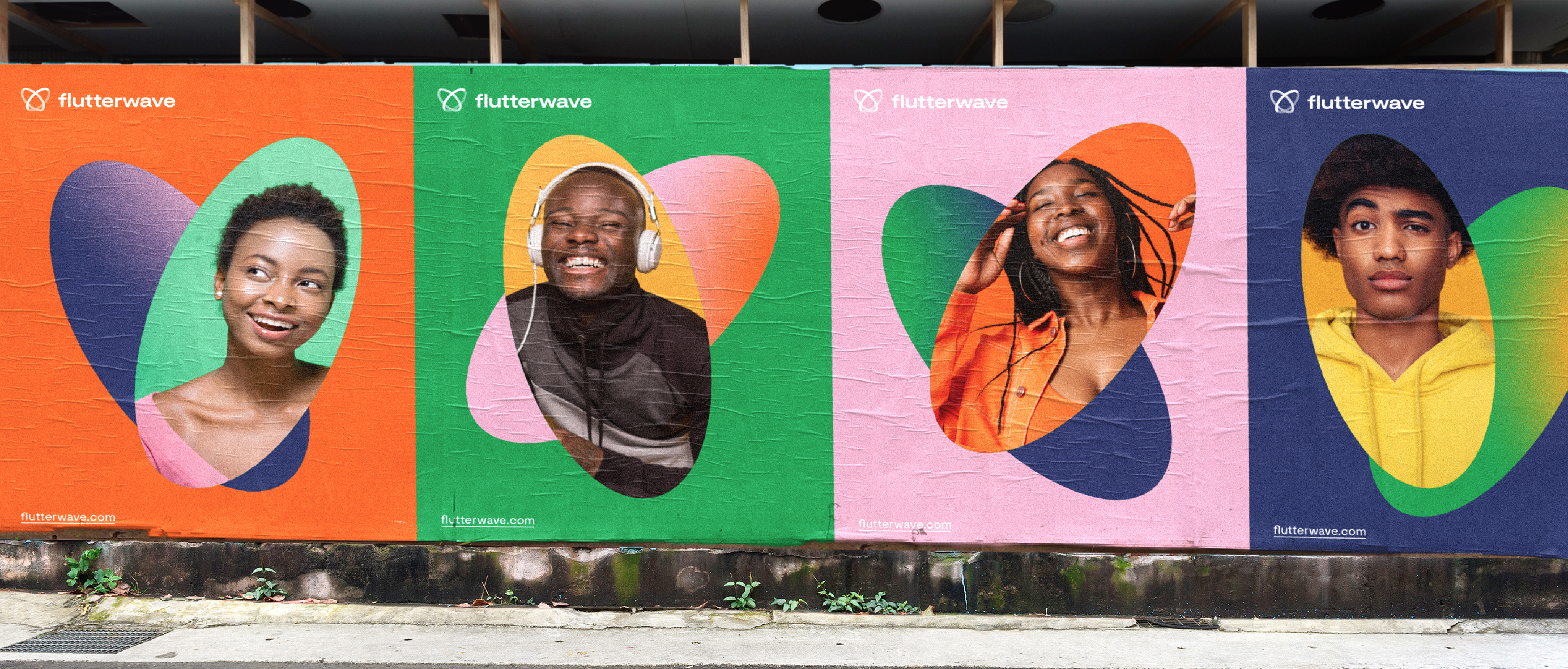Branding. For some companies, one of their most beneficial assets. For others, an afterthought that confuses and frustrates all parties involved.
Yet, the impact of a successful brand image is major, with research showing that companies with stronger identities outperform their competitors by 25%. Let us explain the impact and importance of strong branding in the financial services sector, combined with the long-term implementation. Additionally, we will provide you with insightful tips and advice to help you further develop your successful brand image. Because, well… We like to be helpful, insightful, and share our knowledge with the world.
Branding in a nutshell
When we talk about branding, we mean every aspect that can gain a company recognition. From the tone & voice of a company to the logo and from the corporate design to the social media content: it all boils down to the branding of a company. Branding aids in growing and maintaining your client base, additionally it should be used to create financial value, build trust, creating financial value, and gain employee buy-in. A company should live and breathe its brand image in everything it does from services offered to client interaction. Over time, this will grow understanding and recognition. Leading to both conscious and unconscious associations between the company and its branding.

Why marketeers should prioritize branding in financial services
There are many great examples of companies in the financial services industry that have benefited greatly from implementing a successful branding. A brand is not just a logo and color scheme, it should be applied in the usability, performance, and adaptability for target groups.
A great example of applying branding accordingly, is the payment infrastructure company Stripe. By creating a company that is focused on serving the modern day online retailers, Stripe is considered on of the fasted growing fintech companies today. As the company isn’t public, not all numbers are common knowledge, yet taking the shared information into account, it has likely surpasses competitors like Adyen and Square, if not already closing in on the biggest player: PayPal. Stripe has applied branding successfully, processing “hundreds of billions of dollars” according to their funding announcement. In addition, many in the financial services industry are familiar with the success and potential of Stripe, which, as it is a private company, is mainly thanks to their branding.
PayPal, one of the first fintech companies, is a wonderful example of embodying your brand fully. Describing the brand personality as: helpful, human, innovative, vigilant, and courageous. Innovative and courageous, the brand passed China’s financial services regulations in 2019, making it one of the first online digital payment platform in China. In addition, the company has 429 million active users and enabled 5.5 billion payments transactions by Q2 of 2022.
Modularbanking is a well known verb, widely used in the financial services industry. This is why the Modularbank realized that a rebranding was necessary to stand out from the verb that was inspired by their success. By combining the security and safety of banking and the excitement their services and products should spark, the essence of the company was identified. Combining this with the position their products and services hold at the core of their customers’ companies, Tuum took shape. Sophisticated, elegant, and brave is what their brand emanates, leading to growing successes. Over 2021 Tuum’s contracted annual recurring revenue for example, increased more than 3 times. Another excellent example would be Flutterwave. The brand that is making a mark across the world by building bridges between financial systems.
Financial services go digital
With the increasing pace of digitalization, the financial services industry adapts and grows, with terms like neobanking, fintech, digital banking, and cryptocurrencies. As everyone and everything seems to be online today, the industry is no exception, and for good reason. With the growing interest in online financial services, caused by the ease and convenience for customers, digitalization of the industry is radically changing the branding development of many companies. Branding is now partially, if not fully, based on adapting to the ease and convenience of online services and building values around this.
Branding becomes measurable
Today, successful branding is manageable and made adaptable thanks to the data that allows us to measure all aspects that make the brand. There are many forms and ways in which data can be gathered and measured. Regularly measured aspects that impact the branding of companies are:
Online tools like Google Analytics, and Google Ads are implemented to get a better understanding of the impressions, new leads, search volumes, and reach of websites and campaigns.
When deciding on the most successful form of advertising, data on visitors and impressions can be utilized to calculate the return on investment of each form of advertising.
The sentiment of target groups can be measured by implementing eNPS scans. Turning the 21st century habit of using smileys into a powerful tool to track customer satisfaction.
Complaints can be used to create a better insight into the increase or decrease of a problem or service issues. As well as track customer satisfaction and trends regarding complaints.
Data gathered through omnichannel marketing can be implemented to further improve certain channels and get a better overview of the channel preferences and behaviors of target groups.
Measurements gathered through social media data on customer behavior, customer profiles, preferences, and engagement can be used to further develop services and products.
Strong financial brands garner more visibility and revenue
Recent PWC research established that companies which are seen as having a stronger brand image outperform their competitors by 25% of three-year growth of total shareholder return (TSR). A brand with a strong, distinctive identity attracts customers who support the values of the brand identity, growing the customer loyalty.
Recognition is another powerful tool that branding can implement. Not only the associations that customers make with the brand itself, but also the ability to recognize themselves in the message of the brand. The feeling of being understood by a brand that embodies the beliefs and values of a customer, can further increase the sense of loyalty. With loyalty, comes an increased customer lifetime value (CLV), directly impacting the revenue.
Additionally, brands with a strong brand identity are discussed more regularly as there is an increased amount of loyal customers. Globally, an average of $6 trillion in annual spending is fueled by word-of-mouth marketing. Therefore, a strong brand leads to an increase in revenue caused by word-of-mouth marketing, which is otherwise difficult to influence.

Customers always have emotions
In business, there is no time fore emotions. Yet, in the 21st century, that statement has been deemed outdated.
For a good reason. With the rising theories and knowledge on consumer behavior, the importance of emotions and the impact it can have on a brand is ever-increasing. With the reputation of the industry not being the brightest, due to the worry and fright that financial implications can cause customers, there are important values and actions financial services companies should consider.
Through branding, a response to worry or misunderstanding that customers may experience can be supplied. A financial services brand should preferably be perceived as informative, transparent, and trustworthy. There are an abundance of way in which this can be done through branding. A few examples of this would be:
Provide information on the most recent financial events and explain how this might (not) impact the brand and what is can do to protect or support its customers.
Create a knowledge hub where customers can read information on financial topics, products, and situations. For example, an informative page on what exactly a blockchain is and how these (can) impact their daily lives.
Provide customers with transparent feedback and customer service on the previous year from their perspective, but also from the perspective of the brand. Experiences customers have with a brand can and should be turned into a real moment.
Understand what the main goals and objectives of the customer are and how these could be led by emotions. By identifying these emotions, a plan on how to apply these in a positive way can be created. Stress, caused by buying a house, could be decreased by offering free advisory services when the customers are orienting themselves on the various possibilities.
Financial branding should aim for long term (relationships)
Some industries have a branding landscape that changes every other year, leading to short-term branding strategies and rebranding based on trends. The financial services industry is anything but such an industry, and branding should be based on a long term vision. Branding can also provide clarity when it comes to the long term goals and visions of a company. The brand values and personality can aid in translating its goals and objectives fittingly. Not only internally should the long term view be implemented, external efforts should also follow the long term vision.
Value should be created through brand personality, innovation and security, and the thoughtful and consistent implementation of them. This will increase the customer loyalty and positively influence the customers’ emotions.

Branding should be relevant & distinctive
The financial services industry is an ever evolving landscape, with new trends, technologies, and innovations causing major shifts in offers, demands, and needs. By remaining relevant but never losing sight of the branding strategy and the implementation of this, consistency, accessibility, and transparency are maintained. This will make the brand ever evolving, but with a never changing core. This core, is what will grow the customer loyalty, customer base, and brand recognition. Additionally, a brand should distinguish itself from its competitors by providing their customers with distinctive values and services. This gives customers a clear reason to choose the brand over its competitors and remain with the brand for a long time.
Tips and example that embraces the longer period vision
Establishing a branding strategy or a brand identity is only the beginning, as realizing the strategy and identity is the real challenge. A few ways in which brand identities and strategies can be embraced and reinforce are:
Arrange adequate information on the branding for employees, and show appreciation to employees that embody the branding of the company. Employees are the vessels that carry the branding and translate them to external stakeholders. They should therefore be well aware of the branding strategy so that it can be implemented perfectly.
Short term, mid term and long term activities should be based upon the ultimate goal, vision, or value of the brand. This way, no confusion can be caused by activities that don’t compliment and add value to the ultimate brand goal, vision, or value.
Decision-making should at all times be based upon the branding strategy. If a brand aims for a high quality, professional service; employees should be experienced professionals, not starters.
Make sure the branding is amply communicated to internal and external stakeholders, so they are easily understood, identified and recognized.
